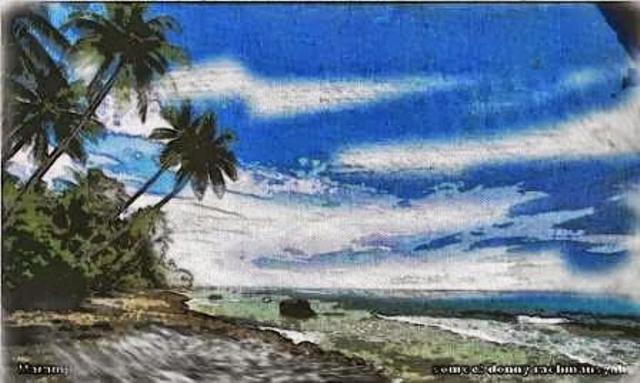We
live in a lonely green planet as part of solar system looked insignificant in the
midst of Milky Way which itself looked as insignificant shining spot among
the very vast super-cluster galaxies. Why we live in such a “remote” little planet? Do we
live in a special place within the grand cosmos? This old question is
unanswered until today.
This
is the astronomical science is for. To observe the vast heaven above us, we
need technology. Without modern telescopes and other observatory equipments
and most of all without astronomers, no way we can answer such human curiosity.
The world knows well about Mount
Palomar Observatory operated for the first time in 1936 by California Institute
of Technology. But hardly people know that before Palomar Observatory was founded,
Indonesia then Dutch East-Indies had already operated an observatory in
Lembang, Bandung in 1925, the first of its kind in southern hemisphere.
Karel Albert Rudolf Bosscha, the owner
of Malabar tea plantation in West Java, and an astronomer Joan George Erardus
Gjisbertus Voute, two persons with significantly different occupations,
cooperated in building the observatory. Having realized that no development of observation
in southern hemisphere, Voute took the initiative to establish an observatory
in South Africa but having no support from the local government, he then moved
to Dutch East-Indies.
His old friend Bosscha, although a simple
agribusiness man, agreed to support the idea and was able to collect one
million guilders from his pocket money in early 1920s to buy the optical lenses
and supporting equipments in Europe under the supervision of Leiden Observatory.
He successfully convinced Ursone brothers, his fellow cattle breeders, living in
Lembang to donate their 6 hectares land in surrounding areas at 1310 meters
above the sea level on which the observatory, then coined as Bosscha
Observatory, was constructed.
The observatory was operated by Nederlandsch-Indische Sterrenkundige Vereeniging (NISV)
who issued its first publication in 1933. In 1951 NISV
handed over the whole ownership and operation of the observatory to Indonesian
Government. The government gave rights to Bandung Institute of Technology (ITB)
to operate it in 1959.
The
observatory was completed with 5 telescopes, each of which has its own
functions. In general, currently the telescopes are intended to observe the
orbits of double stars, of Milky Way including novas and supernovas, of star
spectrums, to make photometry of star eclipse and to examine the new moon for
the fasting month. There is also a radio telescope with the diameter of 2.3
meters operating at the frequencies of 1400 to 1440 MHz to examine distant galaxies
and quasars.
In the early 1960s, UNESCO donated
Schmidt telescope to observe the Milky Way. In 1989, the Japanese Government
donated Cassegrain Goto telescope to measure the strength of stellar light. The
donation was given through Overseas Development Agency (ODA) Program. Unfortunately,
people now construct too many houses surrounding the area where it becomes the
public settlement. As the consequence the place becomes too bright at night against
the astronomers need for minimum light to optimize the observation.
In 2008 the government stipulated it
as one of the vital objects, and under the law No 2/1992 it became the cultural
heritage that must be protected and conserved. The
observatory got international awards in the early 2010s, when four of its previous
directors – Bambang
Hidayat, Moedji Raharto, Dhani Herdiwijaya and Taufiq Hidayat – were coined as
the names of asteroids by the Association of International Astronomy.
The
Bosscha Observatory – once was an important center of scientific research –
ideally should regain its position as the leading observatory from the southern
hemisphere. We all are responsible to find out solution on how to empower,
re-strengthen and renew it to catch up with current developments. One of the most important factors to elevate the status of the observatory is to increase the government attention especially Indonesian Science Body (LIPI) towards the welfare of the astronomers and the one and only astronomy education in ITB.
As the observatory has only slightly
been upgraded, the role of Bosscha observatory becomes insignificant. This
situation is aggravated as other southern hemisphere nations such as Australia
and South America built ultra-modern telescopes.
As a grand nation with big population
such as Indonesia, we need a thoroughly upgrade Bosscha observatory and the
construction of a new modern one. It should be built at a site far from the populated
city, quite high above the sea level. Such a location can be easily selected somewhere
in the Archipelago but unfortunately the government puts the funding of such
requirement into low priorities if not none.
The hope now lies on the loan of grant
from the international scientific society or from the helping-hands of
Indonesian tycoons, as the case of Bosscha who are willing to donate necessary
fund, for which their names can be coined to the new observatory. But so
far we have never heard about local tycoons who donated something for the progress
of the science let alone the development of the observatory.
Who among you, especially the
Indonesia tycoons who are interested on science and want to follow the good deed of Karel Albert Rudolf Bosscha
around hundred years ago.




No comments:
Post a Comment